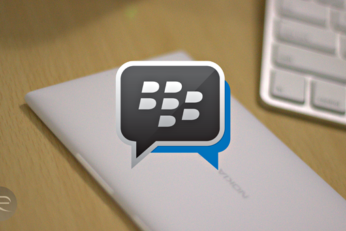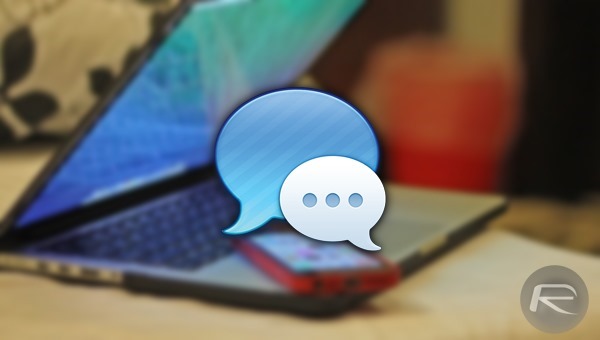If you happen to be on a capped data plan, you'll know all about using certain apps sparingly while monitoring roaming settings like a hawk. But while it's seemingly obvious that a YouTube binge is going to quickly use up that precious quota, Apple's iMessage is a comparatively silent culprit. After all, you can send images, videos, audio clips and text with relative ease, and unlike with WhatsApp and others, they're not heavily compressed. If you want to keep abreast of iMessage's data-usage habits, checking the amount of cellular MBs used is possible at stock level, and although the feature is a little obscure, you can easily access it with just a little bit of navigation.
Once a dominant force in the smartphone industry, BlackBerry has lost its way in recent years, and having fallen way behind the Apple iPhone in the pecking order, the Canadian outfit has called out its Cupertino rival in the battle of the IM services. Having opened BBM up to iOS, Android and Windows Phone recently, the company is now busy trying to sell the once-popular instant-messaging service to the masses, and as is the case with most tech companies nowadays, BlackBerry has gone on the offensive against its fierce rival's corresponding iMessage.
Spam text messages are nothing new, but security research firm Cloudmark is now warning people of a new approach being taken by those who previously relied on SMS to peddle their spam.
Last week, we reported on an issue pertaining to Apple's iMessage service, which meant that some messages would be sent, marked as "delivered," but never received. At the time, an AppleCare rep acknowledged the issue, but now, the company has formally outlined the problem, while also noting that a fix will be bundled into a forthcoming software update.
Talk of Apple being able to read iMessage contents is nothing that new, but it's been at the fore today after the iPhone and iPad maker was forced to reiterate that it cannot see the content of messages, even if it wanted to. That may have put people's minds at rest, and while it should be reassuring, Apple's claim has already had a bog old dollop of doubt thrown at it by jailbreak supremo Pod2g.
The little icon that pops up in iMessage to indicate that the other person is writing a reply can be something of a double-edged sword. Most of the time, we sit there and wait for the message to come through, in which cases it proves a useful implementation, but on other occasions, when the other person pauses their response or replies with something innocuous like (my biggest gripe) "LOL," we often curse the fact that iMessage has essentially given a false-positive. Now, if you want to irritate somebody by feigning an elongated response, you can do using the very simple trick of sending a copy of that very same icon.
Here are a few workarounds to fix iMessage not working issue in Apple’s iOS 7 for iPhone, iPad and iPod touch.
If you’ve ever used an iOS device or a Mac recently, then you’re probably aware of iMessage. Apple’s instant messaging service is a fantastic, free-of-charge way of communicating between compatible iOS devices like the iPhone and iPad, but it looks like the Android world is also getting involved. The iMessage Chat app is now available as a free-of-charge download from the Play Store, and if you trust the word of the security conscious, then it probably represents one of the best and most negatively efficient ways to compromise your Apple ID.
Making phone calls, checking emails and browsing the web are some of the more useful features of Apple's range of iOS powered gadgets, but the introduction of iMessage meant that even iPod touch and iPad owners can send and receive messages to users who are running iOS 5 and above.
If you happen to be an iPhone user or smartphone enthusiast in general, then the news which we brought you yesterday regarding a flaw in Apple's iOS mobile operating system that allows text messages to be spoofed might’ve has caused you a little bit of concern. Regardless of what aspect of the system you are using, it is always a good idea to be vigilant with any incoming communications, especially those that may look like they are attempting to mislead or deceive with malicious intent.




